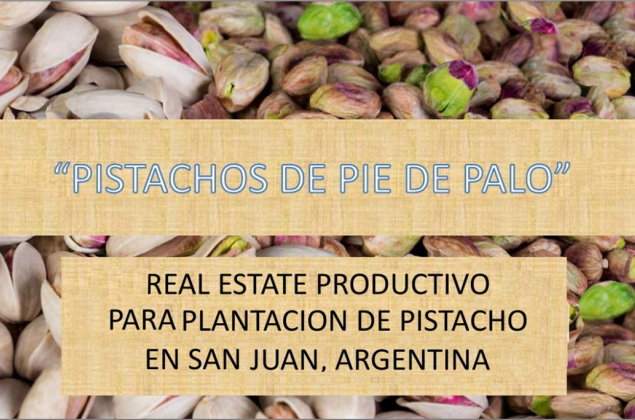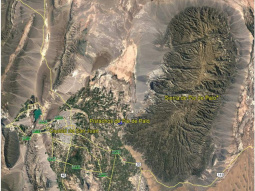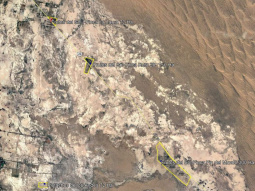Characteristics of the enterprise:
Of the 168 hectares of the farm, there are 40 hectares with drip fertigation, currently planted with olive trees to be removed. It is proposed to convert the olive trees to pistachio trees in phase 1 immediately. - Irrigation comes from a 50 million liter reservoirs with automated drip irrigation equipment, with water on shift and supplemented by own groundwater well, which could be converted to own solar power, to expand the pistachio hectares.
Potential for other agricultural ventures:
The farm has paddocks cultivated with alfalfa, and others are ready to expand the cultivated area. Historically, the farm has had cultivars of: - Grape vines for wine and raisins - Corn - Onion - Garlic - Various vegetables.
Estimation of pistachio profitability:
Technical/productive Parameters based on the productivity conditions of the area over the last 25 years are detailed below:
Beginning of production year 6 with 500 kg/Ha.
Year 7 production of 800 kg/Ha Production year 8 of 1,500 kg/Ha
Production year 9 of 2,500 kg/Ha
Production year 10 onward 3,000 kg/Ha
NOTE: There are already producers in the core zone who are harvesting up to 3,500 kg/Ha per year.
Estimated profitability:
Marketing Values are:
Average sales value of roasted pistachios, salted in shell, is US$ 10/kg.
Average sales value of natural shelled pistachios is US$ 17/kg.
Given certain seasonal conditions, such as production failures/reductions in other exporting countries, the international price rises due to demand.
Italy, the main importer of San Juan pistachio, paid US$13.95 /kg in 2019.
Growth forecast:
 The pistachio tree:
The pistachio tree:
(Source: Strategic Information Unit of the San Juan Investment Development Agency).
The pistachio is a dry fruit, whose seed constitutes the edible part. It is usually consumed salted, roasted and dried as a snack, and is also used in the preparation of pastries and ice cream.
The world production of pistachios is 943,724 tons. Iran and the USA lead the world ranking, concentrating between them 72% of production and 56% of the world area.
Producing countries can be divided into three main groups: high (USA, Turkey and Argentina), medium (Iran, Middle East countries and Greece) and low average productivity (other countries of the Mediterranean basin and North Africa).
In Argentina, there are approximately 803 hectares planted with pistachio, 60% of which are located in San Juan. The plantations that are productively active have average yields of 3,000 kilos per hectare, with producers reaching 3,500 kg/Ha.
There are currently 5 large pistachio producers operating in San Juan, which together cultivate 450 hectares. There are approximately 35 additional hectares of small producers, with individual farms averaging 2.5 ha.
The main world importers are Hong Kong and mainland China. They are followed in importance by Germany, Italy and the trading countries.
With an annual earnings after interest and taxes of USD 6,500 per ton sold at year 10, an IRR of over 30% is shown. The cash conversion cycle (CCE) of the agricultural phase is 334 days and that of the industrial phase is 83 days.
Given the frank expansion of the pistachio nut market worldwide, San Juan could become a relevant player due to its high production yields. If current trends continue over time, the pistachio industry will experience a boom, opening up opportunities for local producers. San Juan has a strategic geographical position since the conception of the central bioceanic corridor, which in the port of Porto Alegre, State of Rio Grande do Sul, Brazil and ends in the port of Coquimbo, IV Region, Chile.
7 reasons to invest in pistachio:
1) PROFITABILITY
A well-advised investor recovers the total investment made in his pistachio plantation within 8 to 9 years. From this point on, profits are increasing and very juicy, without any comparison with any other type of investment in agriculture and above all with a very good future projection. - In production there is profitability from year 6 with 500 kg/ha, in year 9 to 10 average productions of 3,000 kg/ha are obtained, with producers in San Juan reaching 3,500 kg/ha.
2) CONTRIBUTION TO THE ENVIRONMENT
The implantation of large areas of pistachio plantation contributes to massive reforestation in areas prone to deforestation and desertification.
3) USE OF THE SOIL
Pistachio is the best alternative for the use of poor areas where other crops give little yield, being pistachio the most profitable compared to olive trees, vines, almond trees, etc.
4) WATER REQUIREMENTS
The pistachio tree hardly needs water, since it comes from desert or semi-desert lands. - With drip irrigation, production will be higher in proportion to the water we provide.
5) HIGH MARKET DEMAND
The pistachio is a highly demanded and growing fruit, not only as a dry fruit, but also in confectionery, gastronomy and cosmetics. - There is great demand from the European Union and emerging markets such as India and Asia, where demand is growing exponentially due to the increase in their populations.
6) LONGEVITY AND ADAPTATION
The pistachio is a long-lived plant (+100 years) that adapts to a wide range of soils and special climatic conditions, such as those found in Iran, California, Turkey and San Juan in Argentina.
7) LOW COSTS AND BIOLOGICAL ENEMIES
Plant maintenance costs are low and stable over time compared to other crops. It has few biological enemies.






